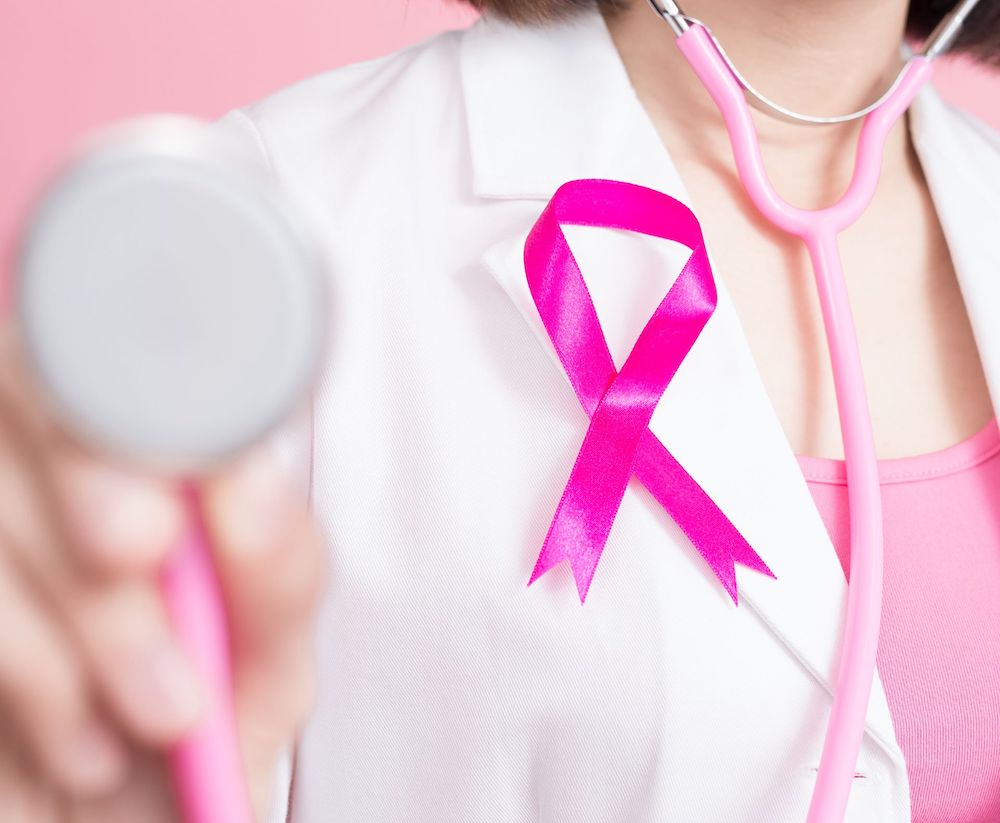Breast cancer affects millions of women around the world. While it is often thought of as a single type, there are actually many different types of breast cancer, each with its own unique set of symptoms and treatment options. With early detection and proper treatment, many women are able to fight it and go on to lead long and healthy lives.
It’s important to get an accurate diagnosis from a qualified medical professional- sometimes even multiple, as second opinions in these cases are helpful. Once you know the type of breast cancer you have, your doctor will begin to develop a treatment plan that is tailored to your individual needs.
Additionally, doctors may also consider the genetic makeup of cancer when making a diagnosis. This classification is important because it helps doctors predict how cancer will respond to specific treatments. By understanding the different types of breast cancer, doctors can develop personalized treatment plans that are more likely to be effective.
 Invasive Breast Cancer vs. Noninvasive Breast Cancer
Invasive Breast Cancer vs. Noninvasive Breast Cancer
When most people think of breast cancer, they think of a tumor that is contained within the breast. However, cancer can also spread beyond the breast and into the surrounding tissue. This is known as invasive breast cancer. Invasive breast cancer occurs when the original tumor breaks through the wall of the duct or lobule and begins to grow into the surrounding tissue. Early detection is key to successful treatment and it is important to be aware of the signs and symptoms of invasive breast cancer so that you can seek medical help if necessary.
While non-invasive breast cancer is not as serious as invasive breast cancer, it is still important to seek treatment because it can progress to a more serious form of the disease. There are several types of non-invasive breast cancer, including Ductal Carcinoma in Situ (DCIS) and Lobular Carcinoma in Situ (LCIS). Treatment for non-invasive breast cancer typically involves surgery to remove the abnormal cells. In some cases, radiation therapy or chemotherapy may also be recommended.
Ductal Carcinoma in Situ
Ductal Carcinoma in Situ (DCIS) is a condition in which abnormal cells are found in the lining of the breast milk duct. The atypical cells have not spread outside of the ducts into the surrounding breast tissue. DCIS is a highly treatable and very early cancer, but if it’s left untreated or undetected, it may spread into the surrounding breast tissue. DCIS is usually found on a mammogram and appears as small calcium deposits in the ducts.
Although DCIS doesn’t typically cause any signs or symptoms, it can sometimes lead to the development of a breast lump or bloody nipple discharge. DCIS is usually discovered during a routine mammogram when it appears as small clusters of calcifications that have irregular shapes and sizes. If you notice any changes in your breasts, it’s important to see a doctor for further evaluation. While DCIS itself is not life-threatening, it can increase your risk of developing invasive breast cancer if left untreated. If you have DCIS, it’s important to talk to your doctor about your treatment options. Treatment for DCIS may include surgery, radiation therapy, or hormone therapy. In some cases, no treatment is necessary if the DCIS is found early and isn’t causing any symptoms.
Invasive Ductal Carcinoma
If you have been diagnosed with Invasive Ductal Carcinoma (IDC), it means that cancer started in the milk ducts of your breast. The good news is that IDC is the most common type of breast cancer, so you are not alone. In fact, about 80% of all breast cancers are IDC. Treatment for IDC typically involves surgery to remove the cancerous tissue, followed by radiation therapy and/or chemotherapy. With early detection and proper treatment, the prognosis for IDC is generally very good. So if you have been diagnosed with IDC, be sure to talk to your doctor about your treatment options and make a plan that is right for you. Invasive Ductal Carcinoma typically affects people over the age of 55. However, transwomen are more likely to develop breast cancer than cisgender men, while transmen are less likely to develop breast cancer than cisgender women.
Your healthcare professional will usually check for lumps in the breast tissue. Lumps can be benign or malignant, so it’s important to have them assessed by a qualified medical practitioner. Your healthcare professional might also check for swollen lymph nodes beneath your arms, as these can sometimes be an indication of breast cancer. They will be able to advise you on the best course of action. It’s important to have regular screenings for breast cancer, especially if you’re at high risk. Invasive ductal carcinoma (IDC) is often detected during routine mammograms, and if your doctor suspects you may have IDC, they may also conduct additional tests, like an MRI or ultrasound. A biopsy may also be necessary to remove a small sample of breast tissue for further analysis. Screenings are crucial because they can help catch IDC early when it’s most treatable. Treatment for IDC typically includes surgery, radiation therapy, and/or chemotherapy. With early detection and treatment, this can be successfully managed.
 Invasive Lobular Carcinoma
Invasive Lobular Carcinoma
Invasive Lobular Carcinoma (ILC) is a type of breast cancer that starts in the lobules, which are the glands in the breast that produce milk. ILC is the second most common type of breast cancer, accounting for about 10% of all invasive breast cancers. ILC is often mistaken for other types of breast cancer because it can appear similarly on mammograms. However, ILC tends to grow more diffusely, and it is often not palpable on physical examination. In addition, ILC is more likely to be associated with certain genetic mutations, such as those in the BRCA1 or BRCA2 genes. Treatment for ILC generally follows the same principles as a treatment for IDC and includes surgery, radiation therapy, and/or chemotherapy. Early detection is key to the successful treatment of ILC, so it is important for women to be familiar with the signs and symptoms of this disease.
Unlike other types of breast cancer, which often cause a distinct lump to form, invasive lobular carcinoma typically grows larger and causes more diffused changes in the breast. In some cases, an area of thickening or fullness may be noticeable in the breast. The skin over the breast may also change texture or appearance, it will be dimpled or thickened and the nipple may become inverted. As with other types of breast cancer, it is important to consult a doctor if you notice any changes in your breasts.
Lobular Carcinoma in Situ and Atypical Lobular Hyperplasia
Lobular Carcinoma in Situ (LCIS) is non-invasive breast cancer that begins in the milk-producing lobules of the breast. Although its name suggests otherwise, LCIS is not true breast cancer and does not spread beyond the lobules where it starts. In fact, LCIS is not even considered a precancerous condition, as it does not increase a woman’s risk of developing invasive breast cancer. However, LCIS may be found in conjunction with other breast abnormalities, such as atypical hyperplasia, which can increase a woman’s risk of developing breast cancer. For this reason, women with LCIS should be sure to undergo regular Breast Cancer Surveillance Consortium (BCSC) screenings. The BCSC recommends that women with LCIS have a clinical breast exam every six months and a mammogram every year. If you have been diagnosed with LCIS, or think you may be at risk, talk to your doctor about the best course of action for you.
Inflammatory Breast Cancer
Inflammatory breast cancer (IBC) is a type of breast cancer that often causes the breast to become red, swollen, and inflamed. This is a rare but aggressive form of the disease. Its symptoms are different from those of other types of breast cancer, and it tends to spread quickly. Cancer cells block lymphatic vessels in your breast, causing the skin to thicken or discolor breast skin with tiny dimples, puckers, or ridges that make it look like an orange peel. In addition to these physical changes, you may also experience fatigue, itching, pain, and a burning sensation in your breast.
Early detection is key, so it is important to be aware of the signs and symptoms of this type of cancer. If you notice any changes in your breasts, see a doctor right away. Prompt treatments are available that can improve the prognosis. Chemotherapy is often used to reduce the size of the tumor before surgery, and radiation therapy is often used after surgery to remove any remaining cancerous cells. While IBC is an aggressive form of cancer, with proper treatment many patients can recover and live long and healthy lives.
 Breast Sarcoma
Breast Sarcoma
Breast Sarcoma is challenging to detect in its early stages because it does not usually cause a lump or change in the appearance of the breast and is generally found during a routine mammogram or self-breast exam. However, if the tumor begins to grow, it can cause pain and swelling.
Breast Sarcomas are a type of cancer that can either be primary or secondary tumors. A primary tumor originates in the breast, while a secondary tumor has spread from another part of the body. Some inherited genetic disorders are known to increase one’s risk of developing a primary breast sarcoma, but the cause is often unknown. Secondary tumors can develop after radiation therapy, chronic lymphedema, certain chemicals, some forms of chemotherapy, and immune system diseases. While breast sarcoma is rare, it is important to be aware of the symptoms, the most common sign is a lump or mass that can be felt under the skin. These lumps are usually painless, but they may cause discomfort if they press on nearby nerves or blood vessels. Sarcoma may also cause bone pain, either as a result of the tumor pressing on the bone or from cancer cells causing the bone to break down. Other signs and symptoms of sarcoma include abdominal pain and weight loss. If you experience any of these symptoms, it is important to see a doctor.
Metaplastic Carcinoma
Metaplastic Carcinoma is a rare and aggressive type of breast cancer that is characterized by the presence of two or more types of cancer cells. Compared to other types of breast cancer, metaplastic breast cancer is faster growing and more likely to metastasize, or spread, to other parts of the body. This unique cancer is often difficult to diagnose and treat, as it can contain elements of both carcinoma and sarcoma. However, recent advances in genetic analysis have allowed doctors to better understand the biology of metaplastic carcinoma and develop targeted treatments.
While metaplastic breast cancer is serious, patients should remember that they are not alone. There are many support groups and resources available to help patients through every step of their journey.
Estrogen Receptor-Positive Breast Cancer and Progesterone Receptor-Positive Breast Cancer
There are several types of breast cancer, and each type is characterized by the presence of specific receptors on the surface of the cancer cells. Estrogen and progesterone are two hormones that can fuel cancer growth. Cells from your breast cancer can be tested for receptors on these hormones. Breast cancer can contain receptors for one of these hormones, both, or neither.
Estrogen receptor-positive means that the hormone can attach to the receptor and potentially stimulate the cancer cells to grow. However, not all breast cancers are fueled by hormones. If your breast cancer is hormone receptor-positive, you may be treated with hormone therapy, which is a type of treatment that works by lowering the number of hormones in the body or blocking the action of hormones on breast cancer cells.
Another type of breast cancer, known as progesterone receptor-positive breast cancer, is sensitive to the hormone progesterone. This means that the cancer cells have receptors that allow them to use progesterone to grow. Endocrine therapy is a treatment that blocks the growth of cancer cells by preventing them from using hormones like progesterone. In the case of progesterone receptor-positive breast cancer, endocrine therapy can be an effective treatment option.
HER2-Positive Breast Cancer
HER2-Positive Breast Cancer tends to be more aggressive than other types of breast cancer, but it is also more responsive to treatment that targets the HER2 protein. There are no unusual symptoms or risk factors associated with this type of cancer, although some studies suggest that it is more common among younger women under 40 years. Ultimately, HER2-positive breast cancer is a serious condition that requires prompt treatment. However, with the right treatment plan, it is possible to achieve remission and enjoy a good quality of life.
Triple-Negative Breast Cancer
Triple-Negative Breast Cancers are classified as such because they lack receptors for estrogen, progesterone, and HER2. It is more aggressive and harder to treat than other types of breast cancer because they don’t respond to drugs that target estrogen, progesterone, or HER2 receptors. Women with triple-negative breast cancer are mainly treated with chemotherapy or take part in clinical trials. Studies show that genetic mutations are more common in women with triple-negative breast cancer, even if they don’t have any family history of breast cancer. If you have triple-negative breast cancer, talk to your doctor about genetic counseling and testing for hereditary forms of breast cancer, such as those linked to the BRCA1 and BRCA2 genes and other genetic mutations. Knowing if you have a genetic mutation helps your doctors determine the best course of treatment for you.
Breast Papilloma
Breast papillomas, also known as intraductal papillomas, are small, wartlike growths that can occur in the milk ducts of the breast. Although ductal papillomas are not cancerous, they can increase the risk of developing breast cancer if left untreated. It can cause a clear or bloody discharge from the nipple, or you may feel a small lump behind or next to the nipple. In some cases, multiple papillomas may be present, which has been linked to a higher risk of developing breast cancer. However, having a single papilloma does not appear to raise the risk of breast cancer. Treatment for breast papillomas typically involves removing the growths surgically. In some cases, radiation therapy may also be recommended.
The chance of developing breast cancer increases with age and with certain lifestyle choices, such as drinking alcohol, being overweight or obese, not exercising, and taking hormone replacement therapy. Treatment for breast cancer may include surgery, radiation therapy, chemotherapy, or targeted therapy. The type of treatment depends on the stage of cancer and the person’s wishes. After you know your type of breast cancer, it’s important to ask your doctor what that means for your outlook and what treatments are available each with its prognosis and treatment plan. Don’t be afraid to ask questions and get a second opinion if you need one. With the right information and support, you can fight breast cancer head-on.
Women often feel isolated and confused when they are newly diagnosed with breast cancer. Connecting with other women who have been through this same experience can help you feel supported and less lonely in such difficult times.


